A Thailand Train Trip in February 2020, Part 1
Bangkok Byron likes nothing better than to sit in a gogo bar spotting the talent, but in his younger days he was just as happy standing at the end of Platform 1 at Doncaster Station spotting the trains. Doncaster is on the former LNER main line from London to Edinburgh, so some of the finest and fastest steam locomotives ever made could be seen on a daily basis. For example, the A3’s of Flying Scotsman fame, and the A4 streamlined pacifics, one of which, Mallard, still holds the world record of 126 mph for the fastest steam engine.
I will even confess to reliving those days with an OO-gauge model railway with (you guessed it) an A3 and an A4 among other locomotives. But I was to find out on my Thailand train trip that model railways are not the only way to satisfy railway nostalgia, and that’s because the SRT (State Railways of Thailand) network is like something from a vanished era.
The network is metre gauge (3’ 3 3/8”), though loading gauge height is not much smaller than that in the UK (UK = 4.3 to 4.6 metres, Thailand = 4.2 metres), so the trains are almost as big. Most of the rolling stock and motive power is old and worn, though the overnight sleeper consisted of a rake of stylish modern coaches which were well appointed throughout, especially in first class.
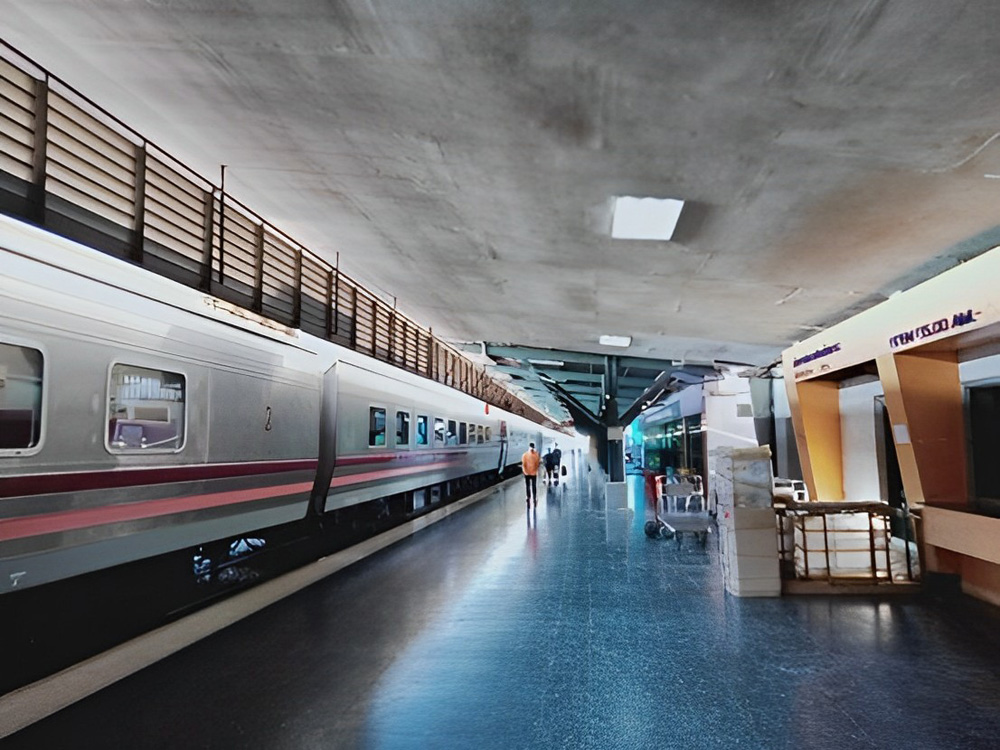
Motive power was diesel-electric, Hitachi 8FA-36C (1993), no. 4513. These locos have a respectable 2,860 hp power output, but are limited to 100 kph – though judging from the sense of speed, I don’t think it got anywhere near that, the average speed for the journey being 50 kph.
Compare that with the average speed from London to Edinburgh way back in the 1950’s – 60 mph (96 kph). You can see A4 Pacific, 60017, Silver Fox, at work on that route in this period film.
I couldn’t help wishing that I had made this trip before 1974, when the motive power would have been a sight more interesting (as would the bars, from what the old timers tell me!). This 4-6-2 steam engine, preserved at Hat Yai station, was built by the Baldwin Locomotive Works in 1928. I can’t find information about its power output, but I’ll bet it could maintain the present day schedule with ease!
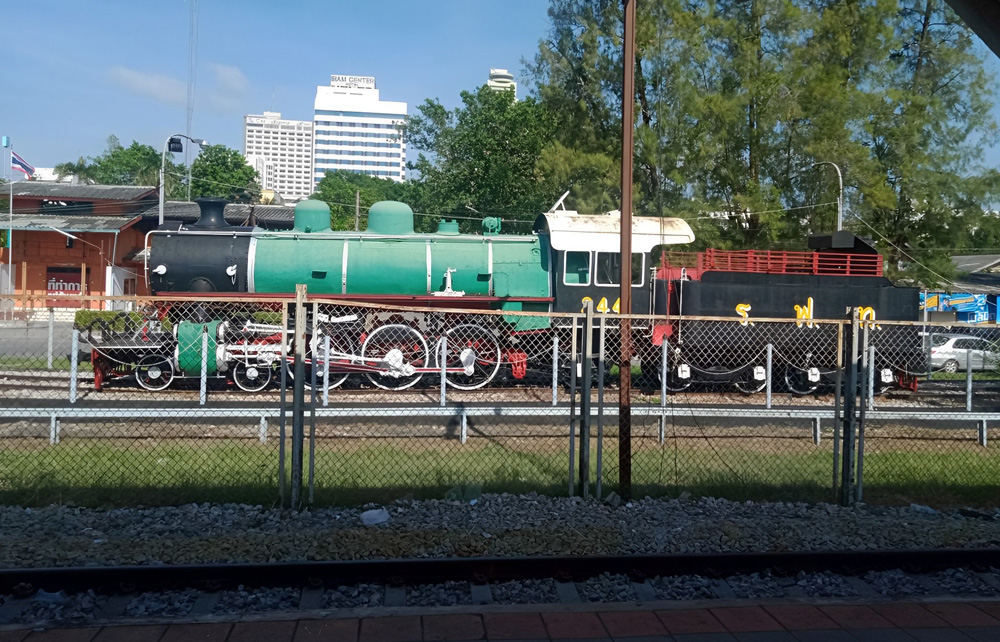
Despite the absence of steam power, this was my dream train trip, which combined two of my favourite hobbies (spotting the trains and spotting the talent). The original plan was to travel by train to Bangkok from Singapore [where I was based at the time], but I was to find that the Singapore link has long been broken. I decided instead to start at Hat Yai, the southernmost station in Thailand. Another change was that I thought it might be interesting to break my journey at Hua Hin, as I had heard that it was a kind of mini Pattaya.
The first class sleeping compartments are designed to sleep two, with a connecting door between every two compartments, which can be unlocked for a family, or a group of four. I was delighted to find that I was to have the compartment to myself. The appointments were luxurious and modern, with a touch screen for information, wi-fi, and mains and USB power points.
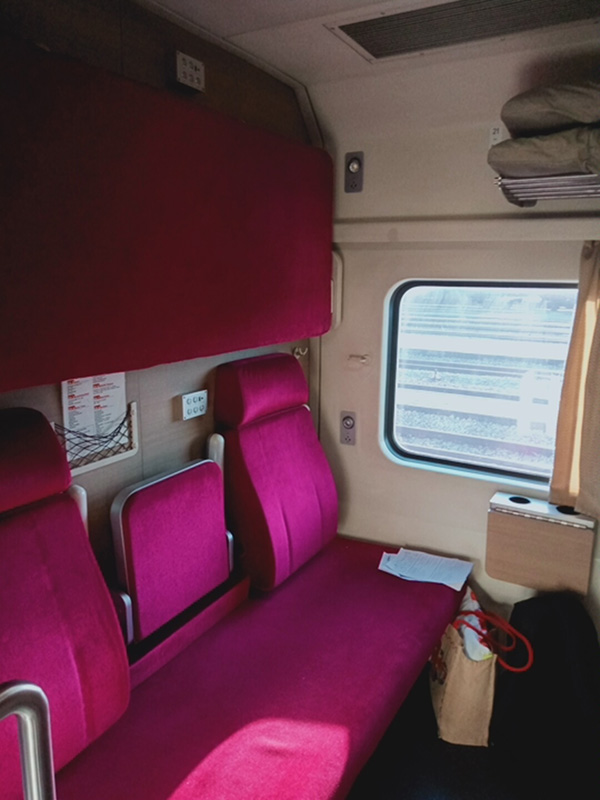
The train started on time at 18:45 and was scheduled to arrive in Hua Hin, the first stage of my journey, at 06:26 (cost, a mere 1,427 THB). The sun was setting as we started, so I saw almost nothing of the scenery over the 621 km of the journey.
On board service was excellent. A choice of meals was available, and at about 10 pm, an attendant came to make up my bed with proper sheets and a pillow – luxury!
I was awoken at around midnight to find that I wasn’t to have the compartment to myself after all, as I was joined by a backpacker at Surat Thani. It is interesting to reflect that, if you see westerners on Thai trains, they are usually backpackers, as the trains are well off the beaten track.
It is not easy to share a sleeping compartment with a stranger, and though we got on well, he was en route to Bangkok, so when my breakfast was served at 5:30 am, he was soundly asleep in the lower berth, so I had to eat it sitting cross-legged in the upper berth.
The train was an hour late arriving in Hua Hin – not that I minded one bit, as 6:26 is rather early to arrive anywhere. As a lifelong railway enthusiast, my theory as to why trains on this route are almost always late is not because of any inadequacy in the motive power (2,860 hp is a little more than the power output of a Brush Type 47, one of the mainstays of the British Railways network from the mid 60’s to the mid 80’s, and capable of an average speed of 75 mph), but rather because of the restrictions of single line working. Trains can only pass at a loop, so a delay with one train is passed on to another. However, there were extensive workings along the line, showing that the track is being doubled throughout. Some sections of rail of the same gauge were already in place, so this has nothing to do with the plan to build a standard gauge, high-speed link from Bangkok to Singapore. Indeed, judging by the many curves on the existing route, I think it would probably have to be a completely new, much straighter route (like HS2 in the UK).
If I’m still on planet earth when that link is finished, I won’t be taking it. It will be one of those soulless electric jobs, with overhead catenaries cluttering up the view, and airline style seating – might as well take the plane. The current SRT network smacks of “Old Thailand”. Indeed, it is about as Thai as you can get (for example, the destination board at Hat Yai has not a word of English, and if you can’t read that squiggly writing, you’ll have to ask – if you can find anybody who speaks English!).
Hua Hin station is also “Old Thailand”. The building is recognised as a building of historical importance to Thai culture.
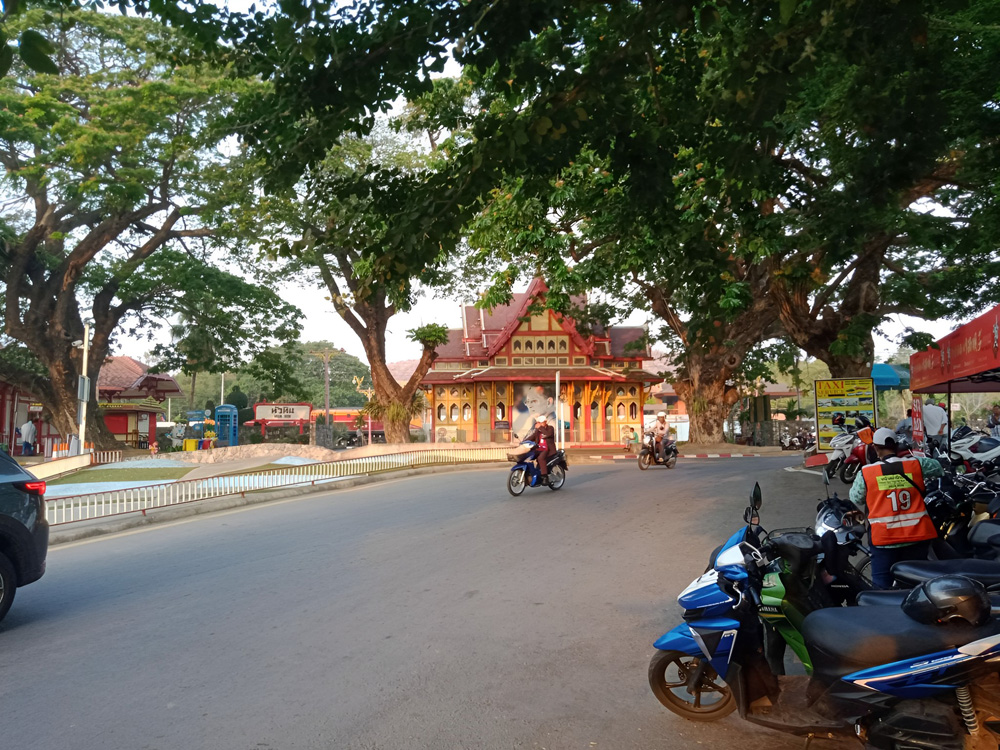
Hua Hin is a small place, and I had already worked out from Google Maps that it would be an easy walk to my hotel – which is just as well, because I am not too comfortable riding behind a Thai motodop (you can see them waiting to the right of the picture), especially when balancing two bags. I stayed at Fresh Inn, a well-appointed hotel just round the corner from the soi where it all happens – Soi Bintabaht.
Check in time was 12, so I left my bags and went walkabout. First stop was a quick look at Soi Bintabaht itself. It was smaller than I expected: only about one hundred yards from end to end.
Here are a few bar signs and bar frontages to give you a flavour of what is on offer. I was to find that there is no point in reviewing individual bars as they are much of a muchness. Just walking along the soi and playing it by ear (or rather, by eye) seems to be the best strategy.
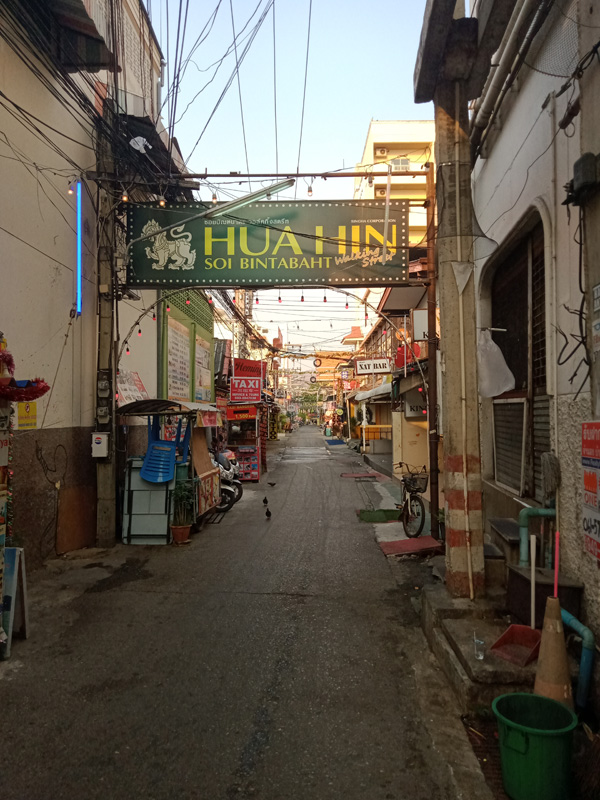
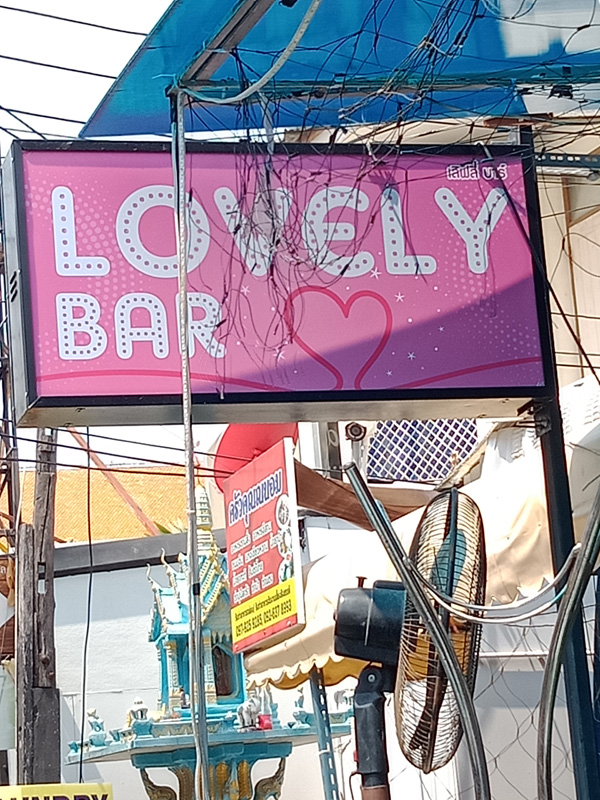
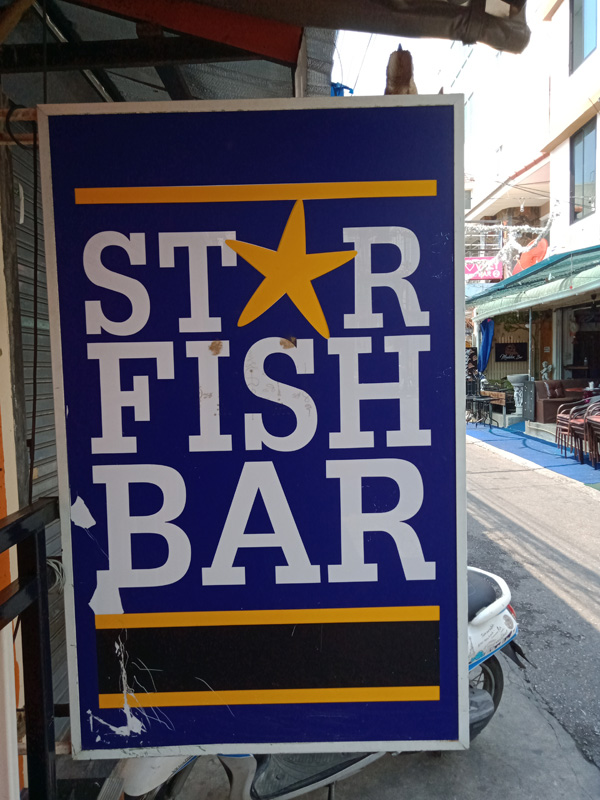
At the western end of the soi you come to a cross road, at the other side of which is a huge and beautiful temple complex, taking up far more acreage than Soi Bintabaht (you can see part of the temple behind the bar signs). This is one of the wonderful things about Thailand – the sacred and the profane unapologetically cheek by jowl.
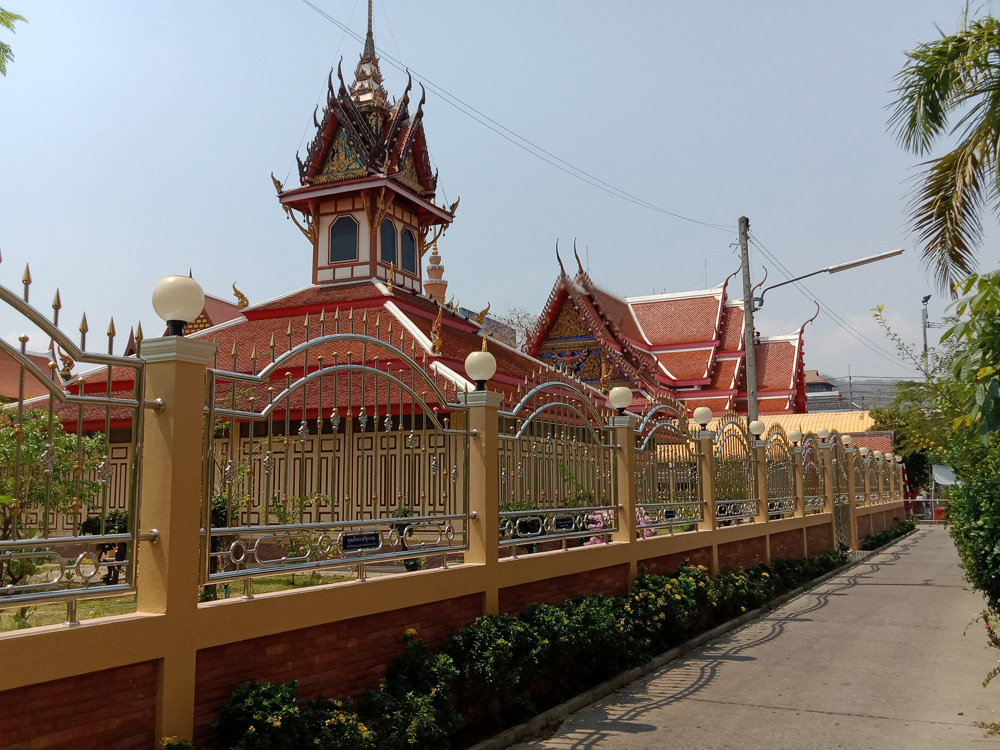
After admiring the temple, I went for a walk along the beach. The beach is about a mile of greyish sand, the northern half with large rocks in the sea, but the southern half clear. The water looked clean and suitable for swimming, but it was early in the morning, so the beach was almost deserted. Later in the day it was full of tourists, mostly western couples of an older age profile.
After the walk, I had an American breakfast at the hotel, and then went to my room to sort out my stuff, take a shower, and rest up for the evening’s adventures.
NOTE 2023: I have not been to Hua Hin since, but the online reviews suggest that it is a shadow of its former self with many of the bars still closed, though I’m sure it continues to flourish in its role as a family beach resort.
If you enjoyed this article, you might also enjoy some of my books about Thailand and the Philippines. Take a look here or here.
The author of this article can be contacted at : rumblejungle2019@gmail.com



